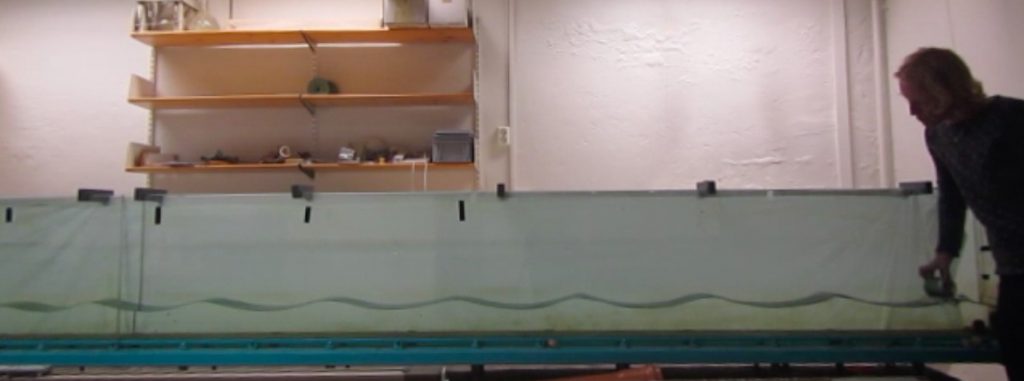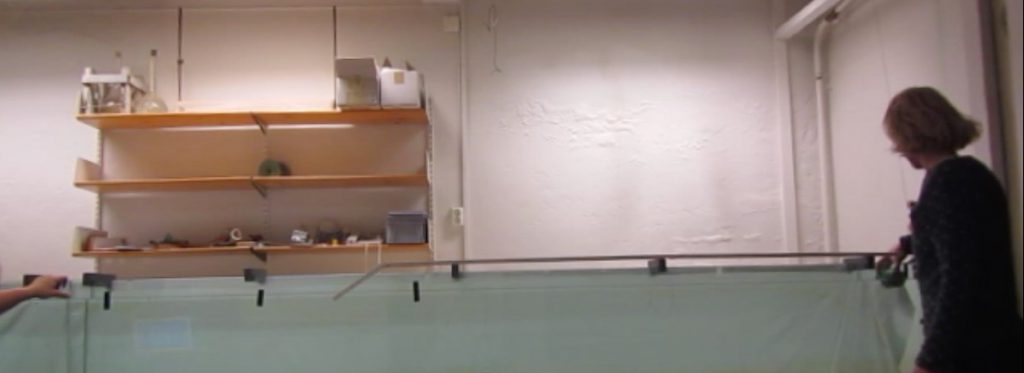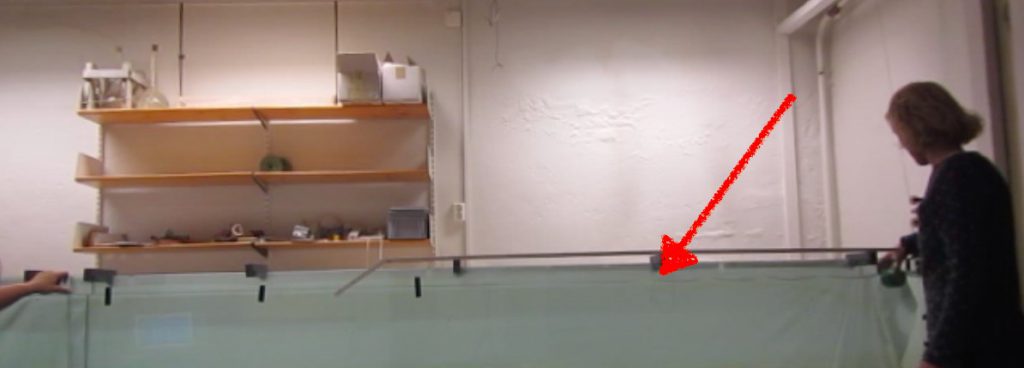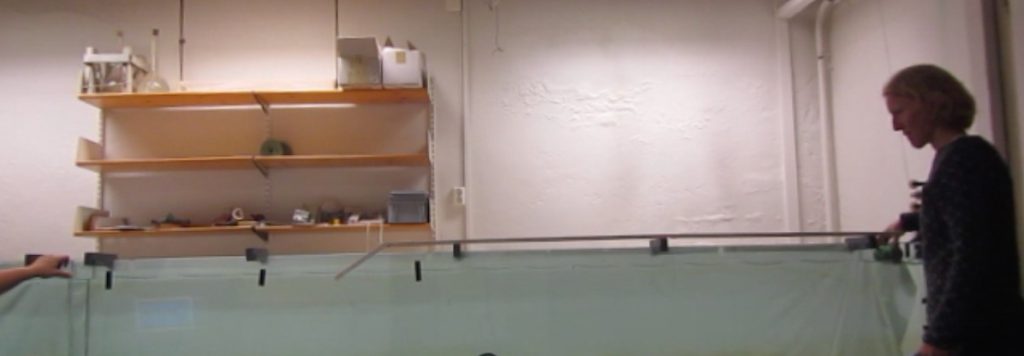When Tor came to visit me in GFI’s basement lab a couple of days ago, he told me about an experiment he had seen in Gothenburg in the seventies. So Elin and I obviously had to recreate it on the spot. Therefore today, we are comparing phase- and group velocities in deep and shallow water!
Waves are excited by means of an oscillating, hand-helt beer can, curtesy of the beer brewing club at GFI. The experiments are filmed and wave lengths and phase velocities are determined from the videos, which is a lot easier than measuring them directly while the experiment is being run.
Shallow water waves
For shallow water, we are using a water depth of 10 cm. Waves are very easy to see and phase velocities are equally easy to measure.

There is another experiment on (standing) shallow water waves being run at GFI the year before students attend GEOF213, which I described back in 2013.
Deep water waves
For deep water waves, we use a water depth of 42.5 cm (the exact number only matters when the tank filling is also used to fiddle with the dead water experiment, as I had been when the idea for this experiment came up).
Typical wave lengths that are easy to do are between 10 and 25 cm (wave lengths obviously have to be short enough that the water is still “deep”, i.e. H>>wave length) — Elin’s instruction to me for the kind of waves she wanted was “Allegro!” :-D Elin, you are really the coolest and most fun person to play with tanks with!
In deep water, we now have the added difficulty that the phase speed is twice as fast as the group speed. This makes observing the whole thing a lot more difficult. Also amplitudes are a lot smaller now, since the tank was so full and we wanted to keep the water inside…
Here is t0 — Elin has just dipped the beer can into the water for the first time

t1 — can you see the wave signal has propagated up to where the red arrow is pointing to?

t2 — the signal has reached my thumb at the left edge of the picture.

From timing this, we can calculate the group speed. We can also measure the wave length on the video and then calculate a theoretical phase speed from that. For the experiments Elin and I did, the results were pretty good, as in phase speed was usually about twice as fast as group speed. And I am curious to hear how well this works out when the students run the experiment!